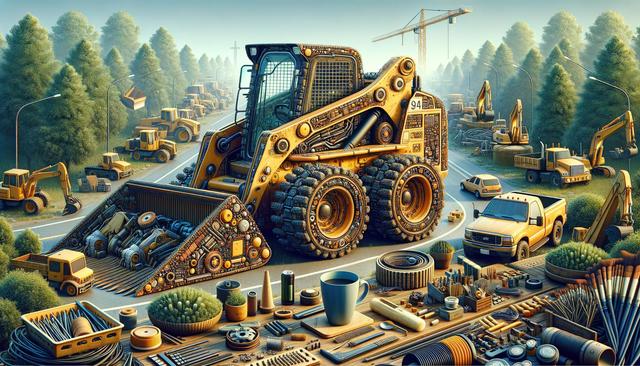Understanding the Versatility of Skid Steers
Skid steers are compact, maneuverable, and capable of handling a variety of tasks, making them a go-to piece of equipment for many industries. Whether you’re involved in construction, farming, or landscaping, a skid steer can serve as a multi-functional tool thanks to its compatibility with numerous attachments. These machines can be equipped with buckets, pallet forks, augers, trenchers, and more, offering adaptability that few other machines can match.
One of the core advantages of skid steers is their ability to operate in tight spaces. Their small footprint and zero-radius turning capabilities allow them to easily navigate confined areas, making them ideal for urban construction sites or small-scale property work. Additionally, their hydraulic systems make changing attachments fast and efficient, minimizing downtime and increasing productivity.
New vs. Used: What to Consider
When looking for skid steers for sale, buyers often face the choice between new and used machines. Each option has its own set of benefits and trade-offs. New skid steers come with warranties, the latest features, and less likelihood of mechanical issues. On the other hand, used skid steers can offer significant cost savings, making them an appealing option for budget-conscious buyers.
Before purchasing a used skid steer, it’s important to conduct a thorough inspection. Key factors to examine include:
- Engine performance and history of maintenance
- Hydraulic system condition
- Wear and tear on tires or tracks
- Attachment functionality and compatibility
- Hour meter reading and service records
These details can help you determine whether the machine will meet your needs and offer reliable performance over time.
Choosing the Right Size and Specs
Skid steers come in various sizes, each suited for different applications. Small-frame models are great for light-duty tasks and tight areas, while medium and large-frame skid steers can handle more demanding workloads and support heavier attachments. When selecting a machine, consider the following specifications:
- Rated operating capacity (ROC)
- Horsepower and engine type
- Lifting mechanism (radial or vertical lift)
- Dimensions and weight
- Attachment compatibility
Matching the machine to your specific work requirements ensures you get the most efficient performance without overpaying for excess capability.
Where to Find Skid Steers for Sale
There are several avenues for finding skid steers for sale, each with its own pros and cons. Authorized equipment dealers typically offer both new and certified pre-owned units, often with warranties and service support. Online marketplaces and auctions can provide access to a wide range of options, sometimes at lower prices, but they may also require more due diligence and risk management.
Don’t overlook local classifieds or rental companies that may be selling off their older fleets. These sources can sometimes offer well-maintained equipment with known service histories. Regardless of the source, it’s always wise to:
- Request a detailed equipment history
- Check for financing or leasing options
- Compare multiple listings before making a decision
Doing thorough research can help you find a quality machine that fits your needs and budget.
Maintenance and Long-Term Ownership
Owning a skid steer involves more than just the initial purchase. Proper maintenance is crucial for ensuring long-term performance and avoiding costly repairs. Most manufacturers recommend regular checks on fluid levels, filters, and tire or track conditions. Keeping up with scheduled servicing can significantly extend the life of the machine.
It’s also beneficial to train operators on proper usage techniques to reduce wear and tear. Misuse or overloading can shorten the lifespan of key components like the hydraulic system or engine. Consider keeping a maintenance log and adhering to a consistent service schedule. Some owners also invest in extended service plans or partner with local service providers for ongoing support.
Ultimately, thoughtful maintenance not only protects your investment but also ensures your skid steer continues to deliver value over many years of use.
Conclusion: Making a Smart Investment
Purchasing a skid steer is a significant investment that can bring long-term value to your operations if chosen wisely. By understanding the features, evaluating new versus used options, and focusing on appropriate size and specifications, you can find a machine that meets your needs. Exploring different sources and committing to regular maintenance will help ensure your skid steer remains a reliable asset for years to come. Whether you’re expanding your fleet or stepping into equipment ownership for the first time, a well-informed approach will help you make a smart and sustainable decision.








